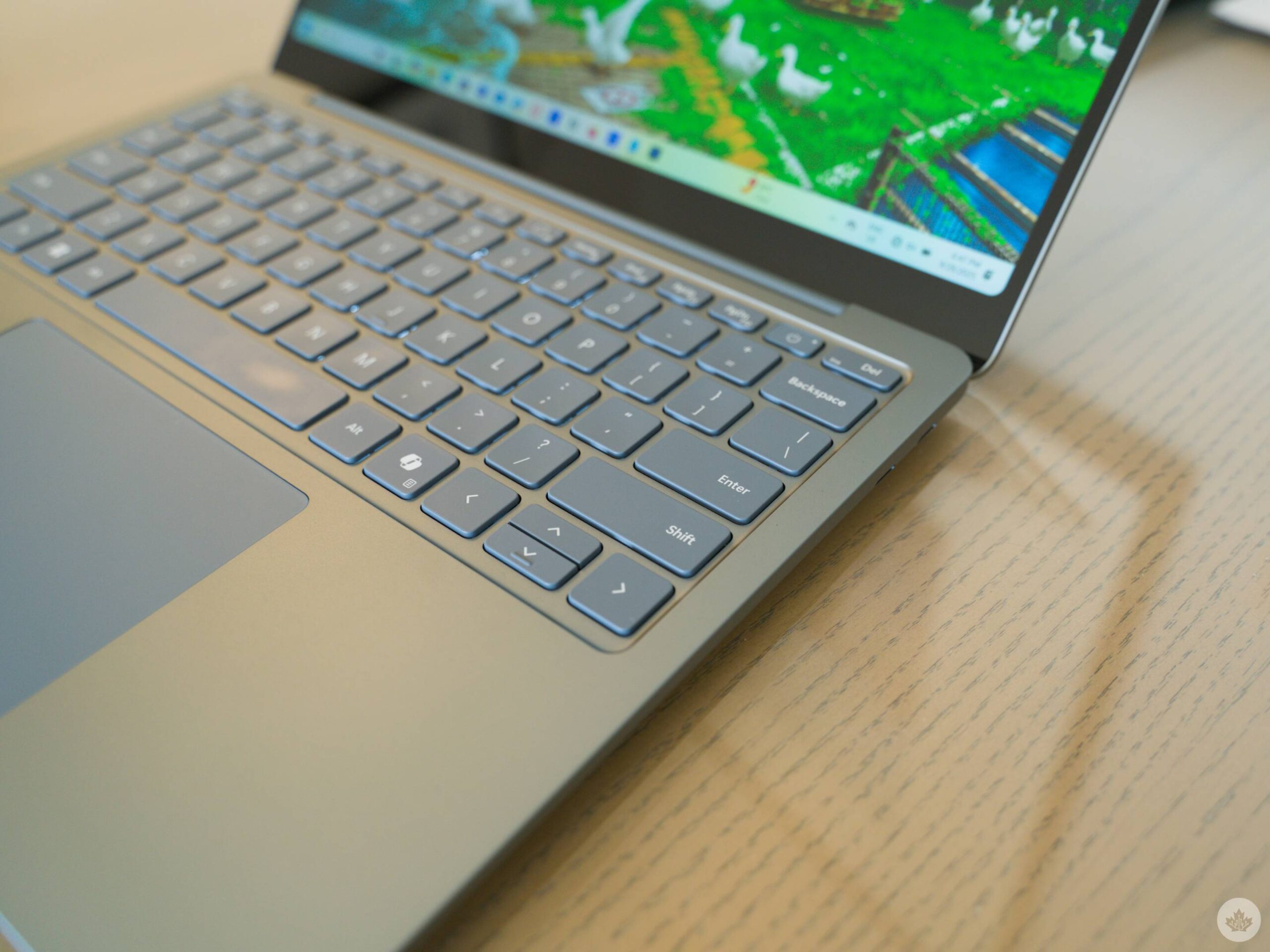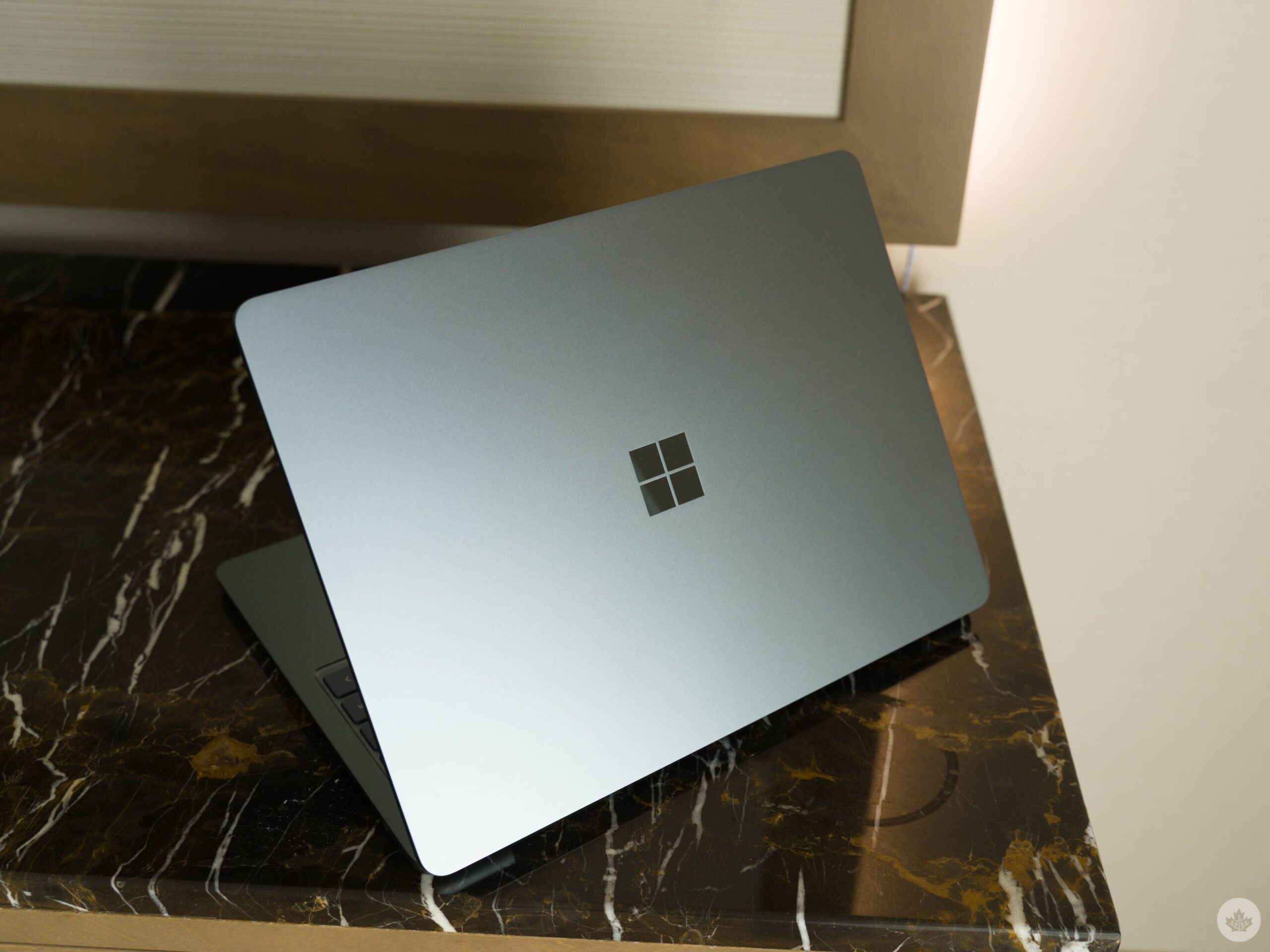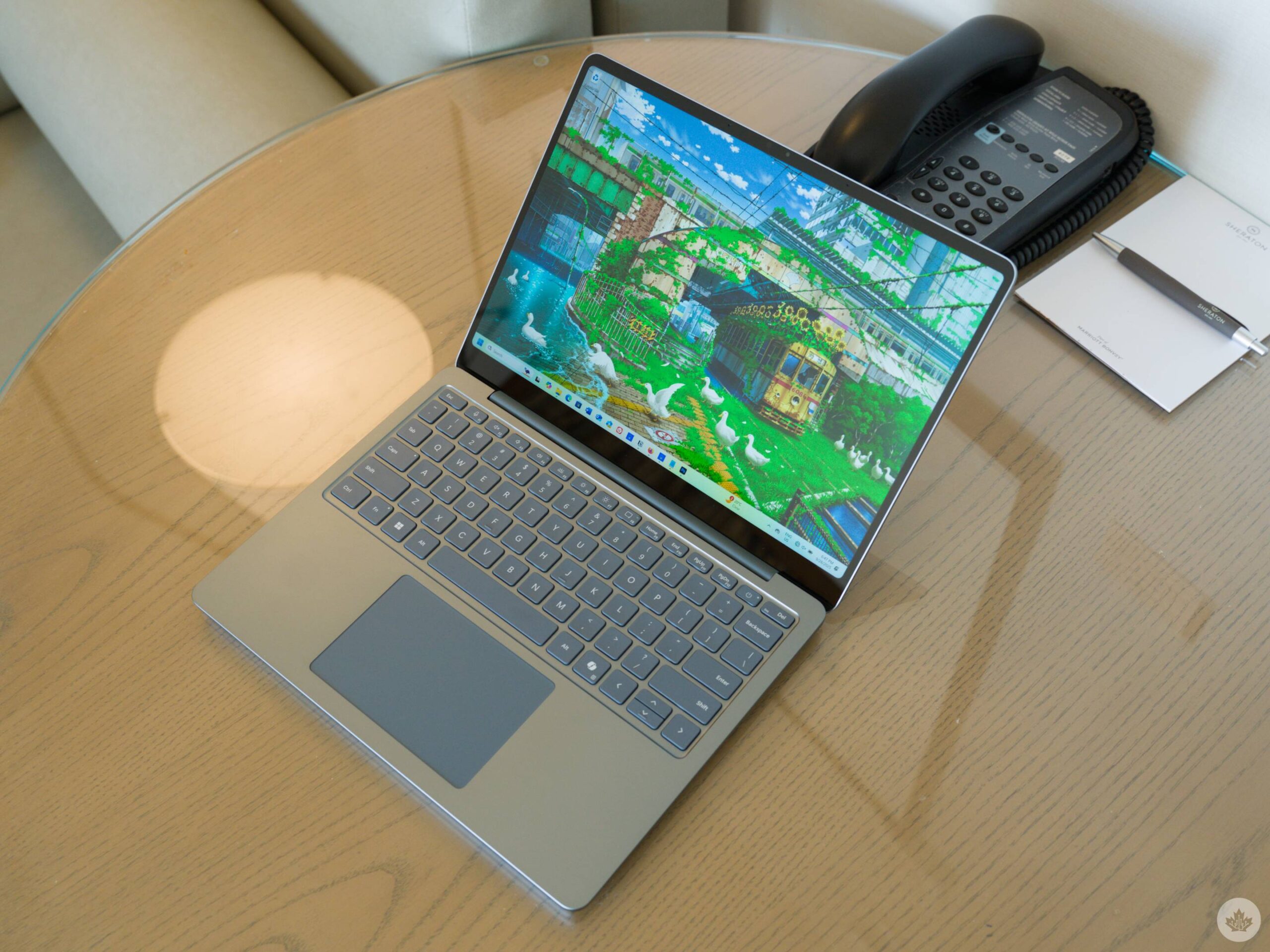Earlier this year, Microsoft expanded its Surface lineup with new, smaller versions of Surface Laptop and Surface Pro. I've been testing both options over the past few months and have been quite impressed.
If you're interested, we'll be publishing a full review of the Surface Pro soon. Otherwise, read on to learn more about the 13-inch Surface Laptop.
Microsoft now offers three sizes of its Surface laptops. The 15-inch and 13.8-inch models are the same as last year, plus a new 13-inch version for people who are willing to sacrifice a little power for more portability.
Overall, I think most of the trade-offs with the smaller Surface Laptop are worth it, but it all depends on your priorities. For someone like me, the 13-inch model is great, but some people may find spending $100 more on the 13.8-inch model a better option.
Characteristics
- Display: 13-inch PixelSense touch display with 1920 x 1280 resolution, 3:2 aspect ratio, 60Hz and 400 nits brightness.
- Processor: Snapdragon X Plus (octa-core)
- Memory: 16 GB
- Storage: SSD up to 512 GB.
- Dimensions: 285.65 x 214.14 x 15.6 mm.
- Weight: 1.22 kg (2.7 lb)
- Camera: Surface Studio Full HD 1080p front camera.
- Operating system: Windows 11
- Battery: 50 Wh
- Connectivity: Wi-Fi 7 and Bluetooth Core 5.4.
- Sensors: Ambient Color Sensor, Fingerprint Sensor.
- Ports: 2 USB-C 3.2, 1 USB-A 3.1, 1 3.5mm audio jack.
- Graphics: Qualcomm Adreno GPU
You can find complete information about the characteristics, as well as comparison with other Surface laptops on the Microsoft site.
The famous Surface, but smaller
Unfortunately, I didn't have a chance to review the 13.8-inch or 15-inch Surface laptop models last year, but when I went practical experience with equipment at the presentation in May 2024I noted that there are some small but nice improvements in the laptops. These include things like an updated display with thinner bezels, which is welcome but not revolutionary.
The 13-inch Surface Laptop has a very similar design, but scales it down a bit. Plus, it retains all the design benefits of the Surface Laptop. The build quality is good, the keyboard is excellent as always. It features the same anodized aluminum chassis as other Surface Laptops, but in three new colors: Ocean, Violet, and Platinum. While there aren't any significant design differences between the Surface Laptop models, there are a few things worth highlighting.
First, the 13-inch model has a wedge-shaped design similar to the 13.8 and 15-inch models, but it's less pronounced, so much so that it's barely noticeable. The 13-inch model is slightly thinner than the 13.8-inch Surface Laptop (15.6 mm vs. 17.5 mm). The difference is subtle, but I previously found the more pronounced wedge design to be a little more comfortable to type on.
The 13-inch Surface Laptop is also slightly lighter at 1.22 kg, compared to 1.34 kg for the 13.8-inch and 1.66 kg for the 15-inch. Again, the difference is small, but the lighter weight will benefit anyone who frequently carries a laptop around. (Unfortunately, it is not as easy as 0.98 kg Zenbuk A14One of my favorite laptops of the year in this thin and light category, but the Surface Laptop feels more substantial by comparison.)
Any port in a storm

The 13-inch Surface Laptop lacks the magnetic Surface Connect port, but it doesn't actually replace it. It has the same number of ports as other Surface Laptop variants: one USB-A port and two USB-C ports, but the ports are downgraded. The 13-inch display has a USB-A 3.1 port instead of 3.2 on other models, and the USB-C ports are USB 3.2 instead of USB 4 on other models. This means that the maximum data transfer speed you can get is 20Gbps, which should be more than enough for most people.
However, I do need to mention Microsoft's slightly misleading specs, which note that the Surface Laptop works with the company's Thunderbolt 4 dock—when I first read this, I thought the Surface Laptop supported Thunderbolt 4, but it actually just works with the dock at slower USB 3.2 speeds.
USB-C ports also have slightly slower charging speeds, at 60W instead of the 65W offered on other models.
But perhaps the most disappointing port change, at least for me, was the move of both USB-C ports to the right edge of the case. Other Surface laptop models have all three USB ports on the left and the Surface Connect port on the right. But the Surface Connect port has a 90-degree design, which means it doesn't protrude too far beyond the laptop. Not so with the USB-C ports on the 13-inch Surface Laptop, which cause charging cables (or anything else you plug into the USB-C ports) to clutter the right side of the device and interfere with my mouse.
Of course, this is a small nuisance, but nevertheless, it is worth paying attention to. Any right-handed person who likes to use a mouse on their laptop will have to deal with cables on this side of the laptop. Of course, there are solutions – you can buy, for example, a USB-C cable with a 90-degree bend. But I would prefer that Microsoft put one USB-C port on each side of the laptop so that users have more choice when connecting devices.
Performance

The big change for 2024, of course, is the inclusion of the Qualcomm Snapdragon X chip instead of the x86 options from Intel or AMD. I wrote about this shift in detail in my Surface Pro (2024) reviewbut the short version is that Snapdragon provides better battery life while maintaining similar performance levels to x86.
This trend continues with the 13-inch Surface Laptop, although not to the same extent. It is powered by the Snapdragon X Plus chip, which has just eight cores, compared to the 10-core X Plus or 12-core X Elite variants available in the 13.8- and 15-inch Surface Laptops. It's also worth noting that the 13-inch model only offers 16GB of RAM, while other versions allow configurations of up to 64GB of RAM. While 16GB should be plenty for the average person, that limitation alone may rule out the 13-inch model for some professionals.
As for the number of cores, the difference in performance is minimal. In tests, the Surface Laptop performed worse than last year's Surface Pro with the X Elite chip. However, the performance hit is minor and will be most noticeable during intensive multi-core workloads such as video editing.
Geekbench 6 points (the higher the better)
- Battery/Balanced profile
- Single core: 2236
- Multi-core: 10,447
- Connected / Best Performance Profile
- Single core: 2413
- Multi-core: 11,304
- GPU: 9065
In real-world use, I found the eight-core X Plus chip to be sufficient. The 13-inch Surface Laptop was consistently fast, and I rarely noticed any slowdown, even when doing bulk image editing in Photoshop (the most intensive work I do on a laptop). I felt a little hampered by the 16GB of RAM, especially when trying to edit photos with a lot of tabs open in my browser, but overall the Surface Laptop performed well.
One area where I found the Surface Laptop to be lacking was in battery life. Don't get me wrong, it was still significantly ahead of most Intel laptops I've tried. However, I found that the Surface Laptop struggled to survive the second day of use, as did other Snapdragon-powered laptops I've tried. However, he had no problem with my typical eight-hour workday.
Is it worth the money?

Microsoft's 13-inch Surface Laptop starts at $1,349 for a 256GB SSD, and the price rises to $1,500 if you want a larger 512GB SSD, though otherwise the specs (octa-core Snapdragon X Plus processor, 16GB of RAM) remain the same.
This starting price puts the Surface Laptop on par with Apple MacBook Air ($1,399) and the same price as the aforementioned Asus Zenbook A14 (though at the time of writing The A14 retailed for $1,199.). Aside from price, the Surface Laptop is very similar to both of these devices.
Starting with the MacBook Air comparison, both laptops feature 13-inch displays, two USB-C ports, 16GB of RAM, and a 256GB SSD, although the Air offers more upgrade options for those who want more RAM or storage. The Surface Laptop's 3:2 display aspect ratio adds a nice verticality over the Air's 16:10 aspect ratio, but the Air's display could get a little brighter. The Air is also noticeably thinner but slightly heavier than the Surface Laptop. It all depends on whether you prefer Windows or macOS.
Ultimately the difference comes down to the chip. The Snapdragon X Plus has two fewer cores than the M4 in Air, and in Apple's tests it has an edge over the Surface Laptop. But performance was close enough that I think most people will be fine with either laptop (and anyone concerned about performance should probably consider other options anyway).
The Zenbook A14, on the other hand, goes in a different direction. Its Snapdragon X chip performs slightly worse than the X Plus in the Surface Laptop, but the better battery life makes the slight performance hit worth it for people like me who use their laptop frequently on the go. I'll also note that the Surface Laptop's display is better than the A14's, and the hardware seems higher quality overall, but the A14 is so lightweight that I'm willing to forgive many of those compromises.
Overall, the Surface Laptop is a great device in a crowded market. The Air and A14 are just two examples of various thin and light options. I'd recommend the Surface Laptop to anyone looking for a premium, high-performance portable computer, as it can handle just about anything, but isn't the best option for specific high-performance tasks. It's also a great option for those who want a MacBook Air but prefer Windows over macOS.
Surface Laptop available directly from Microsoft and also from Amazon Canada And Best Buy in Canada.
MobileSyrup may earn a commission from purchases made through our links, which helps fund the journalism we provide for free on our website. These links do not influence our editorial content. Support us Here.







